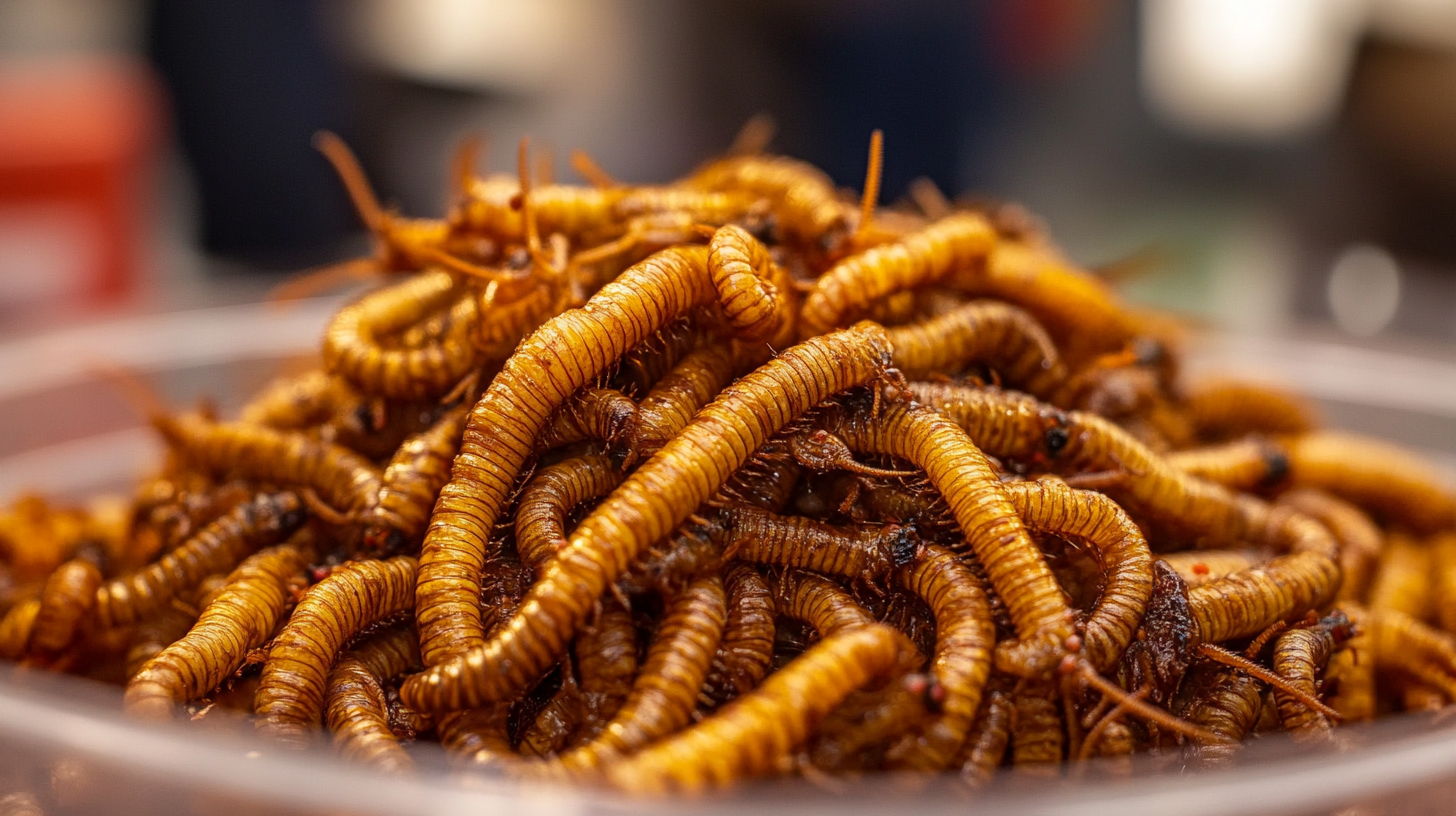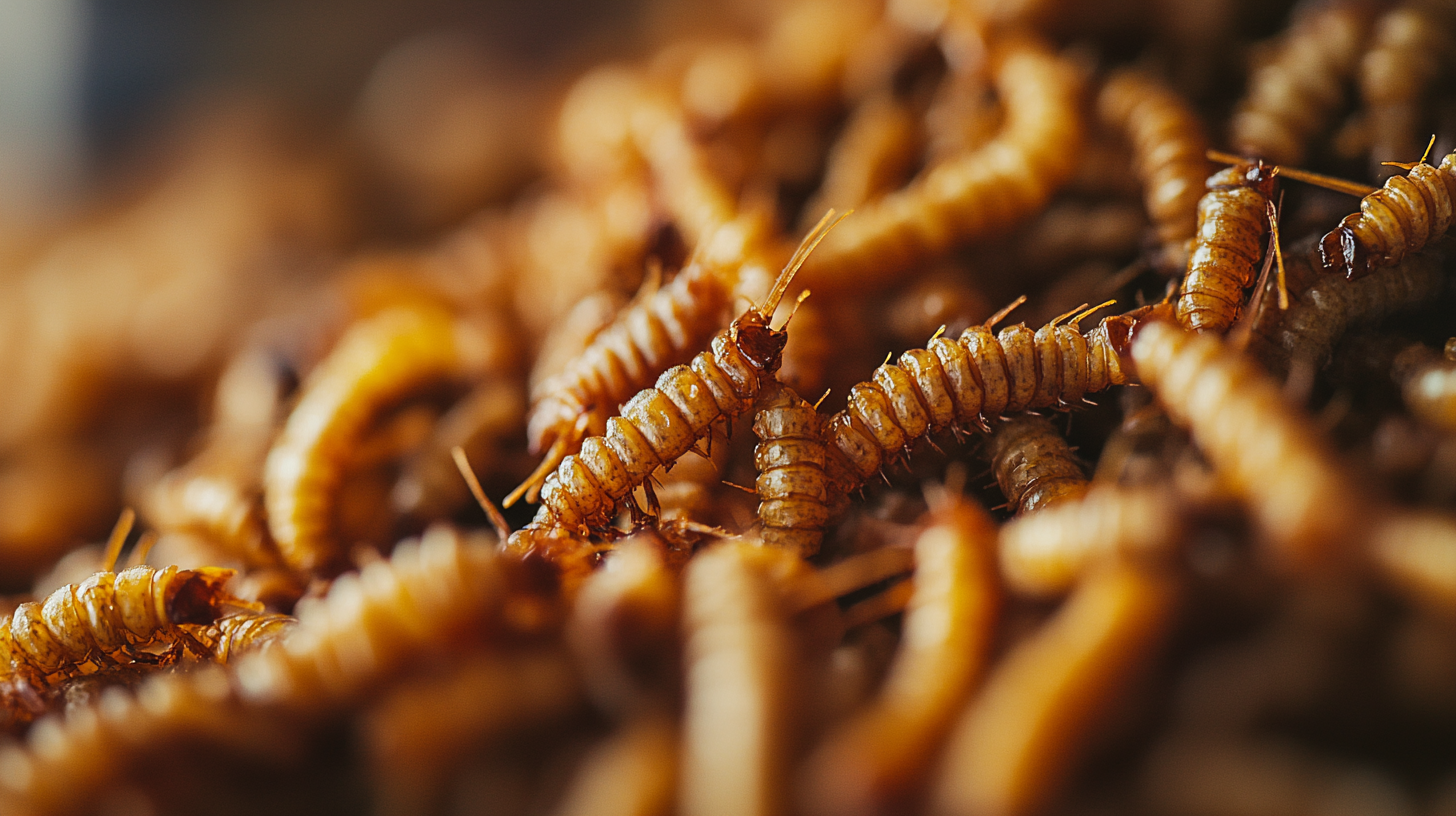In recent years, the global market for protein sources has seen a remarkable shift towards insect-based alternatives, particularly in the context of escalating environmental concerns and the need for sustainable food production. China's burgeoning industry for bulk dried meal worms stands out as a prime example of resilience and adaptability in the face of adversity. Despite the substantial tariff barriers imposed by the US-China trade disputes, China's production of dried meal worms has continued to thrive, driven by innovative agricultural practices and a growing domestic demand for sustainable protein. This blog explores how Chinese manufacturers have navigated the challenges of international trade, leveraging their expertise in insect farming to foster economic growth and maintain a competitive edge, all while addressing the urgent need for alternative protein sources amid a global shift towards eco-friendly food options.

China has firmly established itself as a dominant player in the global dried mealworm market, despite facing significant challenges posed by tariffs in its trade relations, particularly with the United States. The resilience of China's dried mealworm industry lies not only in its robust production capabilities but also in its adaptability to evolving market conditions. By leveraging advancements in technology and sustainable farming practices, Chinese producers have efficiently scaled operations, maintaining quality and quantity that meet increasing global demands.
Moreover, China's strategic investments in research and development have further cemented its position. Efforts to improve the nutritional value of mealworms and develop innovative processing methods attract both domestic and international customers. As global awareness of sustainable protein sources rises, China's dried mealworms are increasingly seen as a viable alternative. This not only helps the country navigate the challenges imposed by tariffs but also positions it as a leader in the next wave of food production systems, highlighting the potential of insect proteins to contribute to a more sustainable future.
In 2023, China has witnessed remarkable growth in its dried mealworm production, defying the challenges posed by the ongoing US-China tariff issues. The country's commitment to sustainable agricultural practices and innovative breeding techniques has propelled it to new heights in this niche market. Statistical reports indicate that production levels have surged by over 30% compared to the previous year, positioning China as a global leader in mealworm supply.
The boost in production can be attributed to several factors, including increased domestic consumption and growing international demand for alternative protein sources. As more consumers shift towards sustainable and healthy dietary choices, dried mealworms have emerged as a favorable option. Furthermore, China's investment in research and development has facilitated advancements in processing and packaging, enhancing the market appeal of this eco-friendly protein. As a result, China's dried mealworm industry is not only thriving despite economic hurdles but is also carving out a significant role in the global food supply chain.
The US-China trade tensions have created ripples in various industries, and the dried mealworm supply chain is no exception. Tariffs imposed on Chinese imports have forced many businesses to reevaluate their sourcing strategies. In the dried mealworm sector, where China is a prominent player, these tariffs could lead to increased costs for American manufacturers relying on Chinese mealworms as a primary ingredient. The challenge lies in balancing price competitiveness while maintaining product quality.
Despite these hurdles, China's dried mealworm industry has shown remarkable resilience. Local producers have been adapting by investing in automated farming technologies and enhancing quality control measures to cater to both domestic and international markets. This innovation not only helps offset the impacts of tariffs but also positions Chinese mealworms as a high-quality, sustainable protein source in a global market increasingly focused on alternative proteins. As the landscape evolves, both Chinese producers and American companies must stay agile, fostering new partnerships and exploring alternative supply chains to navigate the complexities brought forth by trade policies.
In the face of US-China tariff challenges, Chinese producers of dried mealworms have exhibited remarkable resilience and adaptability. Recent industry reports indicate that the global edible insect market is projected to reach USD 1.2 billion by 2023, with mealworms capturing a significant share due to their high protein content and sustainability profile. In response to tariffs, Chinese producers have implemented innovative strategies, such as diversifying their export markets and enhancing value chains. By targeting regions in Southeast Asia and Europe, they’ve managed to offset losses from reduced exports to the US.
Furthermore, technology adoption has played a pivotal role in helping these producers maintain competitive pricing and quality. Advanced farming techniques, including automated feeding systems and climate-controlled growth environments, have increased efficiency and output. According to the International Platform of Insects for Food and Feed (IPIFF), mealworm production can reduce greenhouse gas emissions by up to 90% compared to traditional livestock farming. This sustainable approach not only meets the growing consumer demand for alternative proteins but also positions Chinese producers as leaders in the future of food production amidst ongoing tariff disputes.

As the global demand for sustainable protein sources continues to rise, dried mealworms are emerging as a promising market trend beyond 2023. With China's innovative cultivation methods and commitment to quality, the country's production of dried mealworms is set to flourish despite ongoing tariff challenges with the United States. This resilience in the face of trade obstacles highlights China's strategic approach to maintaining its share of the growing edible insect market, where mealworms offer an eco-friendly alternative to traditional livestock.
Looking ahead, several key trends are likely to shape the future of dried mealworms. Increased consumer awareness regarding health and sustainability will drive demand in both domestic and international markets. Additionally, as culinary creativity expands, we can expect to see a surge in mealworm-based products, from snacks to protein supplements. Furthermore, with advancements in technology and farming practices, production efficiency will improve, making dried mealworms more accessible to a broader audience. As these trends unfold, China’s position in the dried mealworm industry will not only solidify but may also set the stage for long-term growth and innovation.

